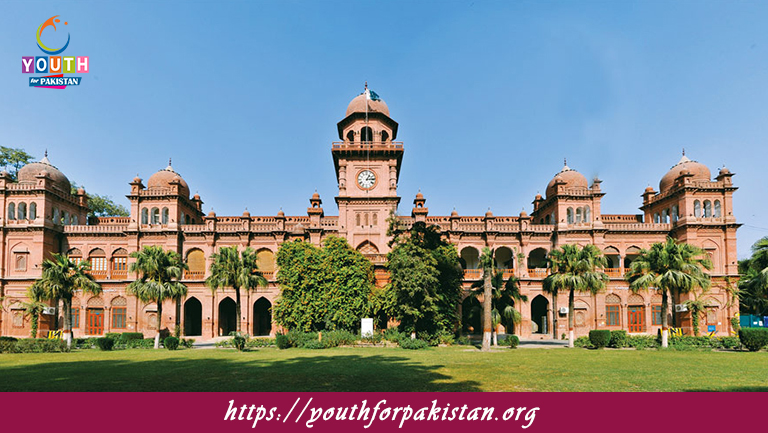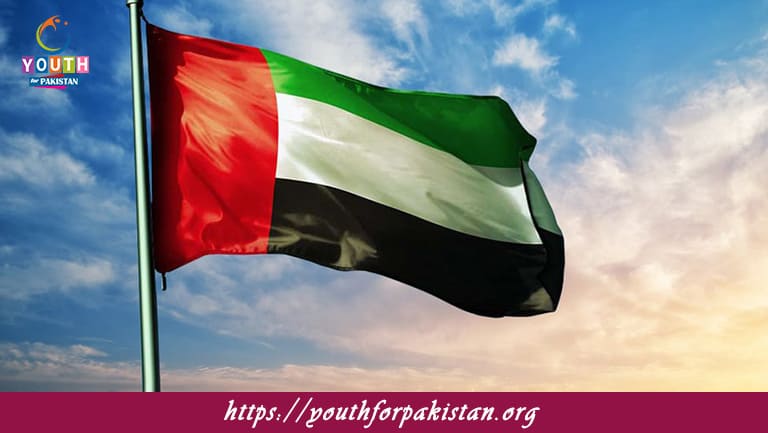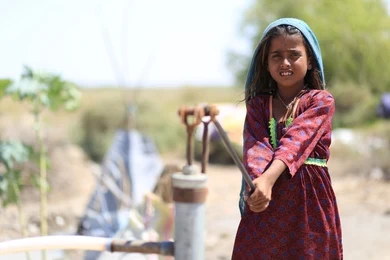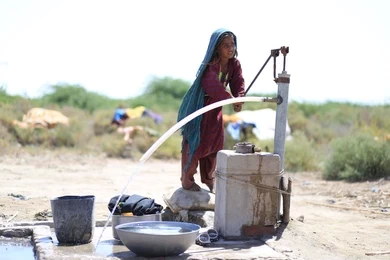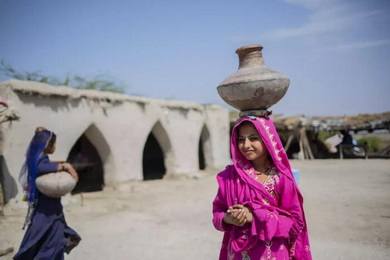Welcome to the Pakistan Space Program MCQs with Answers. In this post, we are sharing Pakistan Space Program Multiple Choice Questions and Answers in Pakistan General Knowledge section for various competitive exams in Pakistan. Find practice Pakistan Space Program practice test with answers here. Each question offers a chance to enhance your knowledge regarding Pakistan Space Program online MCQs Test.
When did Pakistan launch its first indigenously developed satellite into space?
a) 1990
b) 1994
c) 2001
d) 2003
What was the name of Pakistan’s first indigenously developed satellite?
a) PAKSAT-1
b) Badr-A
c) Al-Farabi 1
d) Ra’ad-A
Which organization is responsible for the administration of Pakistan’s space program?
a) Pakistan Space and Upper Atmosphere Research Commission (SUPARCO)
b) Pakistan Aeronautical Complex (PAC)
c) National Engineering and Scientific Commission (NESCOM)
d) Space and Missile Corporation (SMC)
What was the primary mission of Pakistan’s first indigenously developed satellite, PAKSAT-1?
a) Earth observation
b) Telecommunications
c) Weather monitoring
d) Space research
In which year did Pakistan become the 11th country in the world to develop and launch a satellite through its own launching vehicle, the Hatf-VI (Shaheen-II) missile?
a) 1997
b) 2001
c) 2005
d) 2008
What is the primary function of the Pakistan Remote Sensing Satellite (PRSS-1)?
a) Telecommunications
b) Earth observation
c) Weather monitoring
d) Navigation
Which country provided the launch vehicle for Pakistan’s first indigenously developed satellite, PAKSAT-1?
a) China
b) Russia
c) United States
d) France
Which of the following is a major goal of Pakistan’s space program?
a) Establishing a human colony on Mars
b) Developing an advanced space station
c) Enhancing national security and defense capabilities
d) Mining asteroids for rare minerals
What was the purpose of the Badr program initiated by Pakistan in the 1990s?
a) Space tourism
b) Military reconnaissance
c) Telecommunications
d) Deep space exploration
What is the main focus of Pakistan’s space program, as outlined in its national space policy?
a) Advancing scientific research for global space exploration
b) Enhancing communication technologies for international cooperation
c) Improving satellite navigation for commercial purposes
d) Strengthening national security and sovereignty
What was the purpose of Pakistan’s second indigenously developed satellite, PAKSAT-1R, launched in 2011?
a) Military reconnaissance
b) Telecommunications
c) Weather monitoring
d) Space research
Which of the following is a significant milestone achieved by Pakistan in its space program as of 2022?
a) Successful human spaceflight mission
b) Launch of an interplanetary probe
c) Deployment of a space telescope
d) Development of a reusable launch vehicle
What was the purpose of the Ra’ad program initiated by Pakistan in the early 2000s?
a) Satellite-based agriculture monitoring
b) Deep space exploration
c) Military surveillance and reconnaissance
d) International space collaboration
Which organization works in collaboration with SUPARCO to support the development of Pakistan’s space program?
a) Pakistan Air Force (PAF)
b) Pakistan Navy
c) Pakistan Army
d) National Aeronautics and Space Administration (NASA)
What was the primary mission of the Pakistan Remote Sensing Satellite (PRSS-1)?
a) Earth observation
b) Telecommunications
c) Weather monitoring
d) Space research
What is the main focus of Pakistan’s space program, as outlined in its national space policy?
a) Advancing scientific research for global space exploration
b) Enhancing communication technologies for international cooperation
c) Improving satellite navigation for commercial purposes
d) Strengthening national security and sovereignty
What was the purpose of Pakistan’s second indigenously developed satellite, PAKSAT-1R, launched in 2011?
a) Military reconnaissance
b) Telecommunications
c) Weather monitoring
d) Space research
Which of the following is a significant milestone achieved by Pakistan in its space program as of 2022?
a) Successful human spaceflight mission
b) Launch of an interplanetary probe
c) Deployment of a space telescope
d) Development of a reusable launch vehicle
What was the purpose of the Ra’ad program initiated by Pakistan in the early 2000s?
a) Satellite-based agriculture monitoring
b) Deep space exploration
c) Military surveillance and reconnaissance
d) International space collaboration
Which organization works in collaboration with SUPARCO to support the development of Pakistan’s space program?
a) Pakistan Air Force (PAF)
b) Pakistan Navy
c) Pakistan Army
d) National Aeronautics and Space Administration (NASA)
When did Pakistan launch its first indigenously developed satellite into space?
a) 1990
b) 1994
c) 2001
d) 2003
What was the name of Pakistan’s first indigenously developed satellite?
a) PAKSAT-1
b) Badr-A
c) Al-Farabi 1
d) Ra’ad-A
Which organization is responsible for the administration of Pakistan’s space program?
a) Pakistan Space and Upper Atmosphere Research Commission (SUPARCO)
b) Pakistan Aeronautical Complex (PAC)
c) National Engineering and Scientific Commission (NESCOM)
d) Space and Missile Corporation (SMC)
What was the primary mission of Pakistan’s first indigenously developed satellite, PAKSAT-1?
a) Earth observation
b) Telecommunications
c) Weather monitoring
d) Space research
In which year did Pakistan become the 11th country in the world to develop and launch a satellite through its own launching vehicle, the Hatf-VI (Shaheen-II) missile?
a) 1997
b) 2001
c) 2005
d) 2008
What is the primary function of the Pakistan Remote Sensing Satellite (PRSS-1)?
a) Telecommunications
b) Earth observation
c) Weather monitoring
d) Navigation
Which country provided the launch vehicle for Pakistan’s first indigenously developed satellite, PAKSAT-1?
a) China
b) Russia
c) United States
d) France
Which of the following is a major goal of Pakistan’s space program?
a) Establishing a human colony on Mars
b) Developing an advanced space station
c) Enhancing national security and defense capabilities
d) Mining asteroids for rare minerals
What was the purpose of the Badr program initiated by Pakistan in the 1990s?
a) Space tourism
b) Military reconnaissance
c) Telecommunications
d) Deep space exploration
What is the main focus of Pakistan’s space program, as outlined in its national space policy?
a) Advancing scientific research for global space exploration
b) Enhancing communication technologies for international cooperation
c) Improving satellite navigation for commercial purposes
d) Strengthening national security and sovereignty
What was the purpose of Pakistan’s second indigenously developed satellite, PAKSAT-1R, launched in 2011?
a) Military reconnaissance
b) Telecommunications
c) Weather monitoring
d) Space research
Which country provided assistance to Pakistan in developing its first communication satellite, PAKSAT-1R?
a) China
b) Russia
c) United States
d) France
What was the purpose of the PRSS-1 program launched by Pakistan in the 2010s?
a) Space tourism
b) Military surveillance
c) Satellite-based agriculture monitoring
d) Interplanetary exploration
Which of the following is a significant milestone achieved by Pakistan in its space program as of 2022?
a) Successful human spaceflight mission
b) Launch of an interplanetary probe
c) Deployment of a space telescope
d) Development of a reusable launch vehicle
What was the purpose of the Ra’ad program initiated by Pakistan in the early 2000s?
a) Satellite-based agriculture monitoring
b) Deep space exploration
c) Military surveillance and reconnaissance
d) International space collaboration
Which organization works in collaboration with SUPARCO to support the development of Pakistan’s space program?
a) Pakistan Air Force (PAF)
b) Pakistan Navy
c) Pakistan Army
d) National Aeronautics and Space Administration (NASA)
When did Pakistan launch its first indigenously developed satellite into space?
a) 1990
b) 1994
c) 2001
d) 2003
What was the name of Pakistan’s first indigenously developed satellite?
a) PAKSAT-1
b) Badr-A
c) Al-Farabi 1
d) Ra’ad-A
Which organization is responsible for the administration of Pakistan’s space program?
a) Pakistan Space and Upper Atmosphere Research Commission (SUPARCO)
b) Pakistan Aeronautical Complex (PAC)
c) National Engineering and Scientific Commission (NESCOM)
d) Space and Missile Corporation (SMC)
What was the primary mission of Pakistan’s first indigenously developed satellite, PAKSAT-1?
a) Earth observation
b) Telecommunications
c) Weather monitoring
d) Space research
In which year did Pakistan become the 11th country in the world to develop and launch a satellite through its own launching vehicle, the Hatf-VI (Shaheen-II) missile?
a) 1997
b) 2001
c) 2005
d) 2008
What is the primary function of the Pakistan Remote Sensing Satellite (PRSS-1)?
a) Telecommunications
b) Earth observation
c) Weather monitoring
d) Navigation
Which country provided the launch vehicle for Pakistan’s first indigenously developed satellite, PAKSAT-1?
a) China
b) Russia
c) United States
d) France
Which of the following is a major goal of Pakistan’s space program?
a) Establishing a human colony on Mars
b) Developing an advanced space station
c) Enhancing national security and defense capabilities
d) Mining asteroids for rare minerals
What was the purpose of the Badr program initiated by Pakistan in the 1990s?
a) Space tourism
b) Military reconnaissance
c) Telecommunications
d) Deep space exploration
When did Pakistan launch its first indigenously developed satellite into space?
a) 2001
b) 2003
c) 2005
d) 2007
What is the name of the space agency responsible for Pakistan’s space program?
a) Pakistani Space Research Organization (PSRO)
b) Pakistan Space and Upper Atmosphere Research Commission (SUPARCO)
c) Pakistan Aerospace Research Agency (PARA)
d) Pakistan National Space Administration (PNSA)
Which country provided initial assistance to Pakistan in establishing its space program in the 1960s?
a) United States
b) China
c) United Kingdom
d) Soviet Union
What is the primary goal of Pakistan’s space program?
a) Exploration of outer space
b) Commercial satellite launches
c) Research in astronomy and astrophysics
d) Socio-economic development through space technology
What was the name of the first communication satellite launched by Pakistan in 2011?
a) PakSat-1
b) PAKSAT-MM1
c) Badr-A
d) Al-Yah 1
Which year did Pakistan sign an agreement with China for the launch of a remote sensing satellite?
a) 2008
b) 2010
c) 2012
d) 2014
What is the name of the remote sensing satellite launched by Pakistan in collaboration with China in 2018?
a) PakSat-1R
b) PRSS-1
c) Badr-B
d) Al-Yah 2
In which year did Pakistan establish its space agency, SUPARCO?
a) 1960
b) 1965
c) 1970
d) 1975
What was the name of the first Pakistani astronaut who went to space in 1990?
a) Salim Mehmood
b) Raza Munir
c) Namira Salim
d) Shaheen Sadiq
Which type of satellite is primarily used for military and defense purposes by Pakistan?
a) Communication satellite
b) Remote sensing satellite
c) Navigation satellite
d) Surveillance satellite
What is the name of the space research center established by SUPARCO in Karachi, Pakistan?
a) Karachi Space Research Center (KSRC)
b) Pakistan Space Center (PSC)
c) Space and Upper Atmosphere Research Center (SUARC)
d) Space Application Research Center (SARC)
What is the name of the second communication satellite launched by Pakistan in 2011?
a) PakSat-1R
b) PAKSAT-MM2
c) Badr-C
d) Al-Yah 3
What is the name of the space agency responsible for Pakistan’s space program?
a) Pakistani Space Research Organization (PSRO)
b) Pakistan Space and Upper Atmosphere Research Commission (SUPARCO)
c) Pakistan Aerospace Research Agency (PARA)
d) Pakistan National Space Administration (PNSA)
What was the name of the first communication satellite launched by Pakistan in 2011?
a) PakSat-1
b) PAKSAT-MM1
c) Badr-A
d) Al-Yah 1
Which year did Pakistan sign an agreement with China for the launch of a remote sensing satellite?
a) 2008
b) 2010
c) 2012
d) 2014
What is the primary goal of Pakistan’s space program?
a) Exploration of outer space
b) Commercial satellite launches
c) Research in astronomy and astrophysics
d) Socio-economic development through space technology
What is the name of the remote sensing satellite launched by Pakistan in collaboration with China in 2018?
a) PakSat-1R
b) PRSS-1
c) Badr-B
d) Al-Yah 2
In which year did Pakistan establish its space agency, SUPARCO?
a) 1960
b) 1965
c) 1970
d) 1975
What was the name of the first Pakistani astronaut who went to space in 1990?
a) Salim Mehmood
b) Raza Munir
c) Namira Salim
d) Shaheen Sadiq
Which type of satellite is primarily used for military and defense purposes by Pakistan?
a) Communication satellite
b) Remote sensing satellite
c) Navigation satellite
d) Surveillance satellite
What is the name of the space research center established by SUPARCO in Karachi, Pakistan?
a) Karachi Space Research Center (KSRC)
b) Pakistan Space Center (PSC)
c) Space and Upper Atmosphere Research Center (SUARC)
d) Space Application Research Center (SARC)
What is the name of the second communication satellite launched by Pakistan in 2011?
a) PakSat-1R
b) PAKSAT-MM2
c) Badr-C
d) Al-Yah 3
When did Pakistan launch its first indigenously developed satellite into space?
a) 2001
b) 2003
c) 2005
d) 2007
What is the name of the first communication satellite launched by Pakistan in 2011?
a) PakSat-1
b) PAKSAT-MM1
c) Badr-A
d) Al-Yah 1
Which country provided initial assistance to Pakistan in establishing its space program in the 1960s?
a) United States
b) China
c) United Kingdom
d) Soviet Union
What is the primary goal of Pakistan’s space program?
a) Exploration of outer space
b) Commercial satellite launches
c) Research in astronomy and astrophysics
d) Socio-economic development through space technology
What was the name of the first communication satellite launched by Pakistan in 2011?
a) PakSat-1
b) PAKSAT-MM1
c) Badr-A
d) Al-Yah 1
Which year did Pakistan sign an agreement with China for the launch of a remote sensing satellite?
a) 2008
b) 2010
c) 2012
d) 2014
What is the name of the remote sensing satellite launched by Pakistan in collaboration with China in 2018?
a) PakSat-1R
b) PRSS-1
c) Badr-B
d) Al-Yah 2
In which year did Pakistan establish its space agency, SUPARCO?
a) 1960
b) 1965
c) 1970
d) 1975
What was the name of the first Pakistani astronaut who went to space in 1990?
a) Salim Mehmood
b) Raza Munir
c) Namira Salim
d) Shaheen Sadiq
Which type of satellite is primarily used for military and defense purposes by Pakistan?
a) Communication satellite
b) Remote sensing satellite
c) Navigation satellite
d) Surveillance satellite
What is the name of the space research center established by SUPARCO in Karachi, Pakistan?
a) Karachi Space Research Center (KSRC)
b) Pakistan Space Center (PSC)
c) Space and Upper Atmosphere Research Center (SUARC)
d) Space Application Research Center (SARC)
What is the name of the second communication satellite launched by Pakistan in 2011?
a) PakSat-1R
b) PAKSAT-MM2
c) Badr-C
d) Al-Yah 3
When did Pakistan launch its first indigenously developed satellite into space?
a) 2001
b) 2003
c) 2005
d) 2007



